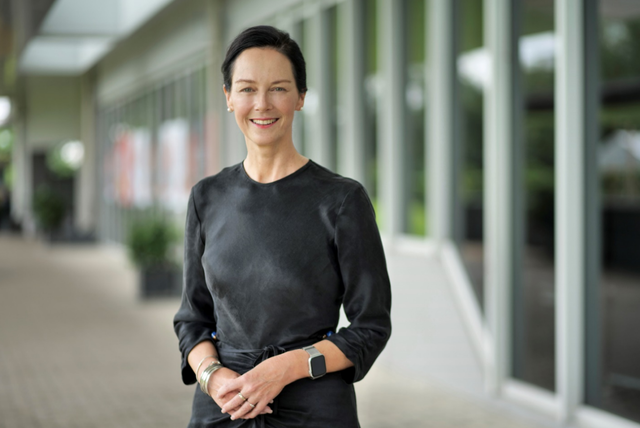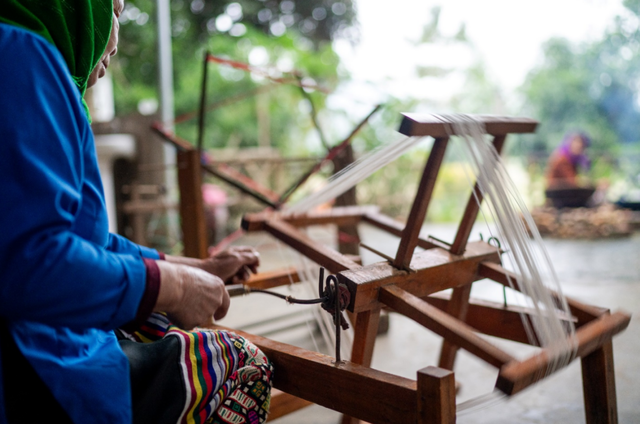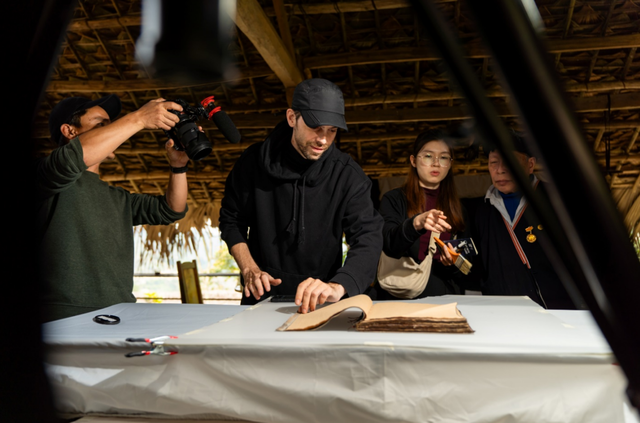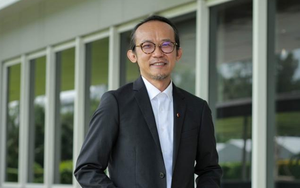
Tradition reimagined for a digital future
Associate Professor (AP) Donna Cleveland, Dean of School of Communication & Design at RMIT Vietnam, believes the country is poised to become a global leader in preserving living culture through innovation, if it chooses the right path now.

Dean of School of Communication and Design at RMIT Vietnam, Associate Professor Donna Cleveland. Photo: RMIT
From craft villages to global platforms
Vietnam is home to an extraordinary diversity of textile heritage, with each ethnic community preserving its own unique forms of weaving, dyeing, embroidery, and pattern symbolism, including Batik, indigo dyeing, and brocade.
These practices are often passed down through generations and form an integral part of local identity, storytelling, and rituals.
But this rich heritage is under threat. Climate change is wiping out plants used for natural dyes. Younger generations are migrating to cities. Globalised fashion trends often strip cultural motifs of meaning while giving little back to the artisans.
“Efforts to preserve traditional crafts are still fragmented and underfunded, with limited access to digital tools or platforms that could aid preservation, storytelling, and market access,” AP Cleveland said.

Current efforts to maintain traditional crafts are somewhat uncoordinated and face financial limitations, with only modest use of digital tools that could support their preservation, storytelling, and market reach. Photo: RMIT
Vietnamese government programs such as OCOP (One Commune One Product) and museum initiatives have laid a foundation.
Yet the key action moving forward is to empower communities to be not only subjects of research but co-researchers, co-authors, and co-owners of the processes and platforms that shape their future.
“This work goes beyond preservation,” AP Cleveland said. “It’s also about cultural justice, creativity, and shared prosperity.”
Innovation doesn’t erase tradition, it deepens it
In the next 25 years, AP Cleveland envisioned a vibrant fusion of the old and new.
“Craft practices will not only survive but they will also evolve, thanks to digital tools and cultural recognition,” she said.
Technologies like 3D scanning, AR/VR, and AI-assisted design can help preserve patterns, teach skills, and share stories across generations and borders.
But the biggest shift may not be technological. It will be cultural.
“We’ll see a move from top-down preservation to community-led innovation,” AP Cleveland predicted.
Artisans will become both guardians of tradition and co-creators of sustainable futures.
Storytelling, long seen as a passive tool, will emerge as a powerful research and design method.

Technologies such as 3D scanning, augmented and virtual reality, and AI-assisted design offer potential to preserve traditional patterns, support skill transmission, and facilitate storytelling across generations and cultures. Photo: RMIT
As global consumers seek ethical, traceable, and meaningful products, Vietnam’s heritage could meet that demand, especially if blockchain and digital provenance tools are used to protect authenticity.
“Craft tourism, design education, and digital marketplaces will grow,” AP Cleveland said. “If we invest now, Vietnam can lead in cultural sustainability.”
A future that honours the past
Building this future will require collaboration at every level.
Government must create national frameworks for intangible heritage – policies that support digital documentation, protect artisan intellectual property, and invest in cultural infrastructure.
“We need clear rules around data sovereignty and benefit-sharing,” AP Cleveland said.
For businesses, especially in fashion and design, the opportunity lies in ethical partnerships.
“Support shouldn’t be transactional,” she stressed. “It needs to be long-term, transparent, and driven by community goals.”
Technological platforms, from mobile storytelling apps to blockchain verification systems, can give artisans more control and visibility.
Education, too, must evolve. It is where these ideas come to life.
While policies and platforms lay the groundwork, it is in the classroom, and beyond, where the next generation begins to shape the future.
What excites her most?
“Seeing young artisans and designers working together to reimagine tradition, not as something fixed, but as something alive, evolving, and beautiful,” she said.
And this is her message to the next generation: “Innovation doesn’t mean erasing the past. It means listening deeply, building trust, and creating with care.”
As Vietnam moves toward 2050, its greatest strength may lie not only in smart factories or AI labs, but in its ability to blend ancient wisdom with new tools – ensuring tradition thrives in a digital world.
Tradition reimagined, or replaced? | Vietnam 2050: The vision ahead
Vietnam 2050: The vision ahead is a thought leadership series powered by RMIT Vietnam's academic experts, exploring what Vietnam could become over the next 25 years. Each article unpacks potential major shifts – from smart cities and education to tech and entrepreneurship – offering predictions and ideas for a future-ready nation.

Ha Hoang
Link nội dung: https://news.tuoitre.vn/tradition-reimagined-for-a-digital-future-103250930144813805.htm
